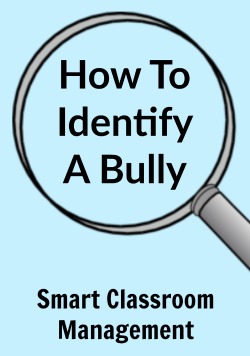 A few years ago, I wrote a guide to eliminating bullying.
A few years ago, I wrote a guide to eliminating bullying.
It has since become a resource for schools and districts across the country.
It’s fairly complete, so I’ll try not to cover the same ground here.
But there is one thing the guide doesn’t address.
It’s an obstacle that keeps teachers and administrators from protecting every student from bullying.
It is this: Many victims are unsure if they’re actually being bullied.
You see, bullies are good at making you think that they’re really your friend. They’re good at making fun of you one minute and then saying that they’re only joking the next.
They’re good at tripping you and laughing at you on the way out to recess and then smiling and asking if you want to go play soccer with them.
This underscores the importance of defining for your students—through modeling, playacting, and role-playing—what bullying looks like.
This is a critical step that goes a long way toward eliminating it from your classroom.
Still, it doesn’t address the confusion many victims feel over whether or not they’re actually being bullied because, well, sometimes friends argue and say mean things to each other.
Sometimes friends kid around and talk “smack.” Sometimes friends roughhouse, play fight, and stick their wet finger in your ear
Although these behaviors may be against school or classroom rules, and may be cause for questioning a friendship, they don’t necessarily constitute bullying.
And herein lies the confusion.
How can students know for sure if they’re being bullied?
Well, there is a test. It’s a very simple test, but it’s 100% accurate in determining who is and isn’t a bully.
It will give students a tool to know beyond a doubt whether that person who keeps asking them to play soccer is a true ally or a tormentor looking for a new target.
A side benefit of the test is that once it’s taught and becomes widely known, it puts all bullies on notice. Just knowing that their motives can and will be tested has a way of severely limiting their behavior.
It also helps those who continue to bother and pester others—but who would never think of themselves as a bully—to recognize that they are, in fact, a bully.
So what is this test?
It’s actually a request the victim makes of the bully. It’s only two words, but has the potential to change everything.
It is this: “Please stop.”
Now, it’s important to point out that the request to stop, which must be specific (As in, “Please stop tripping me, pushing me, or calling me names.”), is only a way to identify a bully or dissuade them from continuing such behavior.
It will not stop the bully who is intent on humiliating others. You, the teacher, must do that (see guide on bullying).
But what it does do is give the victim a surefire way to know if they’re being bullied. Because, if the person being asked doesn’t stop, then by definition, they’re a bully.
Having this vital information has a way of empowering students to speak up and tell someone.
Furthermore, when “please stop” becomes the culture of your classroom or school it can virtually wipe out bullying behavior.
It brings the problem out into the open. It encourages friends to look out for friends and promotes healthier, more trusting relationships.
It exposes every bully on campus.
So you can put an end to their despicable behavior.
If you haven’t done so already, please join us. It’s free! Click here and begin receiving classroom management articles like this one in your email box every week.

Thank you! I tell this to students on a near daily basis…
You’re welcome, Barb.
Michael
I LOVE this! As a ‘specials’ teacher with over 800 students a week, it’s difficult to help students know when they are getting bullied. I have a tough time trying to address issues that don’t happen in my classroom and actually identifying when it is a bullying situation and when it is not. Often I can not do much about a situation that happens outside of my room, but at least I can support my students with tools to really know the difference between friends and bullies.
Thank you, Michael, you always provide clear insight that is useful.
Kellie Determan
It’s my pleasure, Kellie. I’m glad you like the article.
Michael
Thank you for this – two words that seems so simple but yet so powerful in helping someone identify if they are being bullied or not.
Máire
You’re welcome, Máire.
Michael
I’ve taught this very thing to my kids. I teach 2nd graders and I do think some of these kids aren’t quite to the classic bully yet, but still don’t know how to control themselves. I teach kids to say “Please stop” and that if someone tells them “please stop” to stop.
Thank you for this pearl of wisdom — for myself! Even as an adult, I have sometimes been unsure of how to deal with people who bother me. These two words give me a way to politely do it without being embarrassed or making a scene. If they listen, problem solved! If they don’t, I’ll know I am being bullied and I can decide what action to take.
Thanks, again!
You’re welcome, Penny! Very true.
Michael
Thanks for this simple but powerful idea. I’ll definitely try it, even I am thrown off guard when I hear “I’m only playing with him Miss!”
I’ll definitely let my kids know about this for them to say it when bothered. Thanks for the article!
You’re welcome, Debbie.
Michael